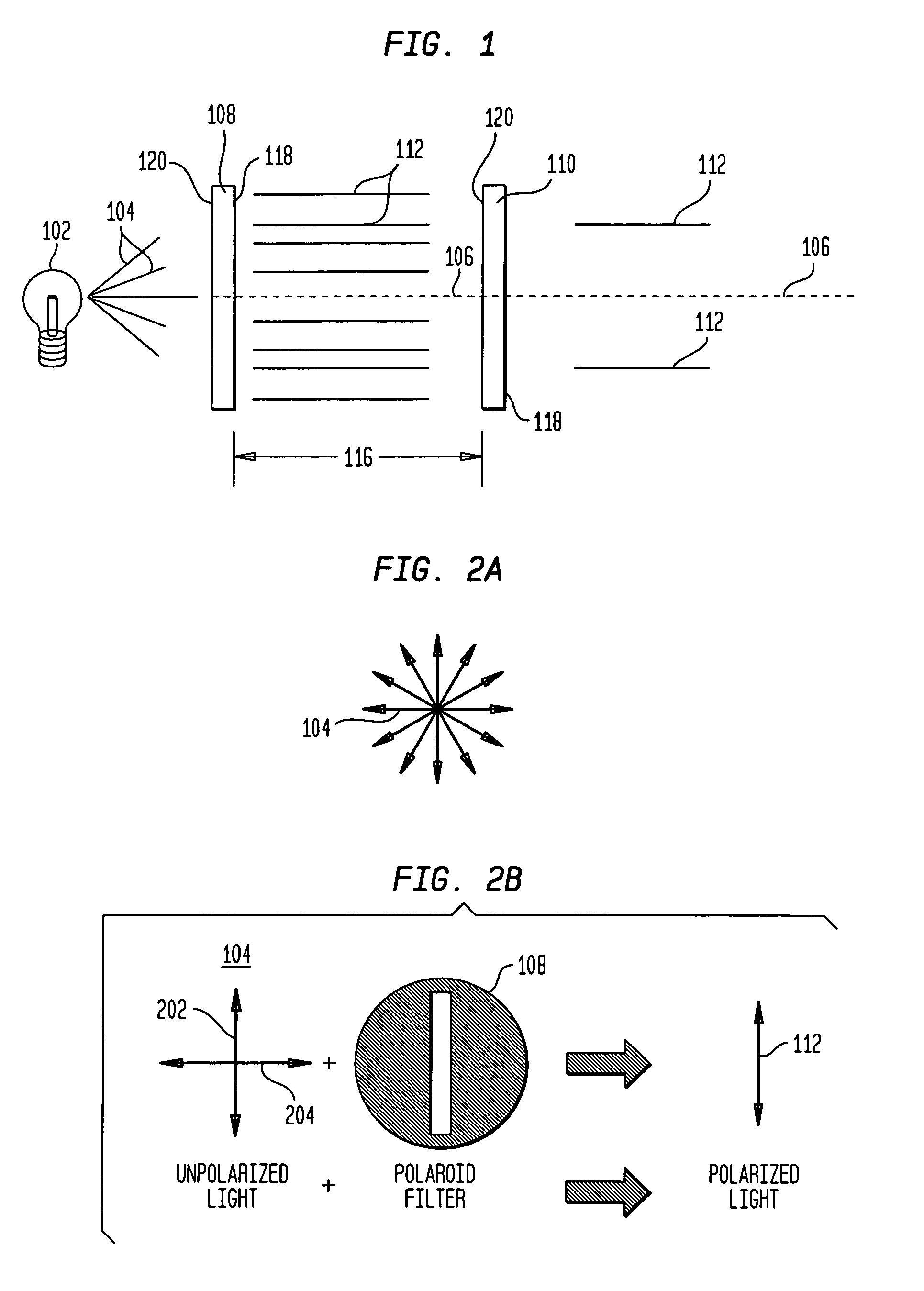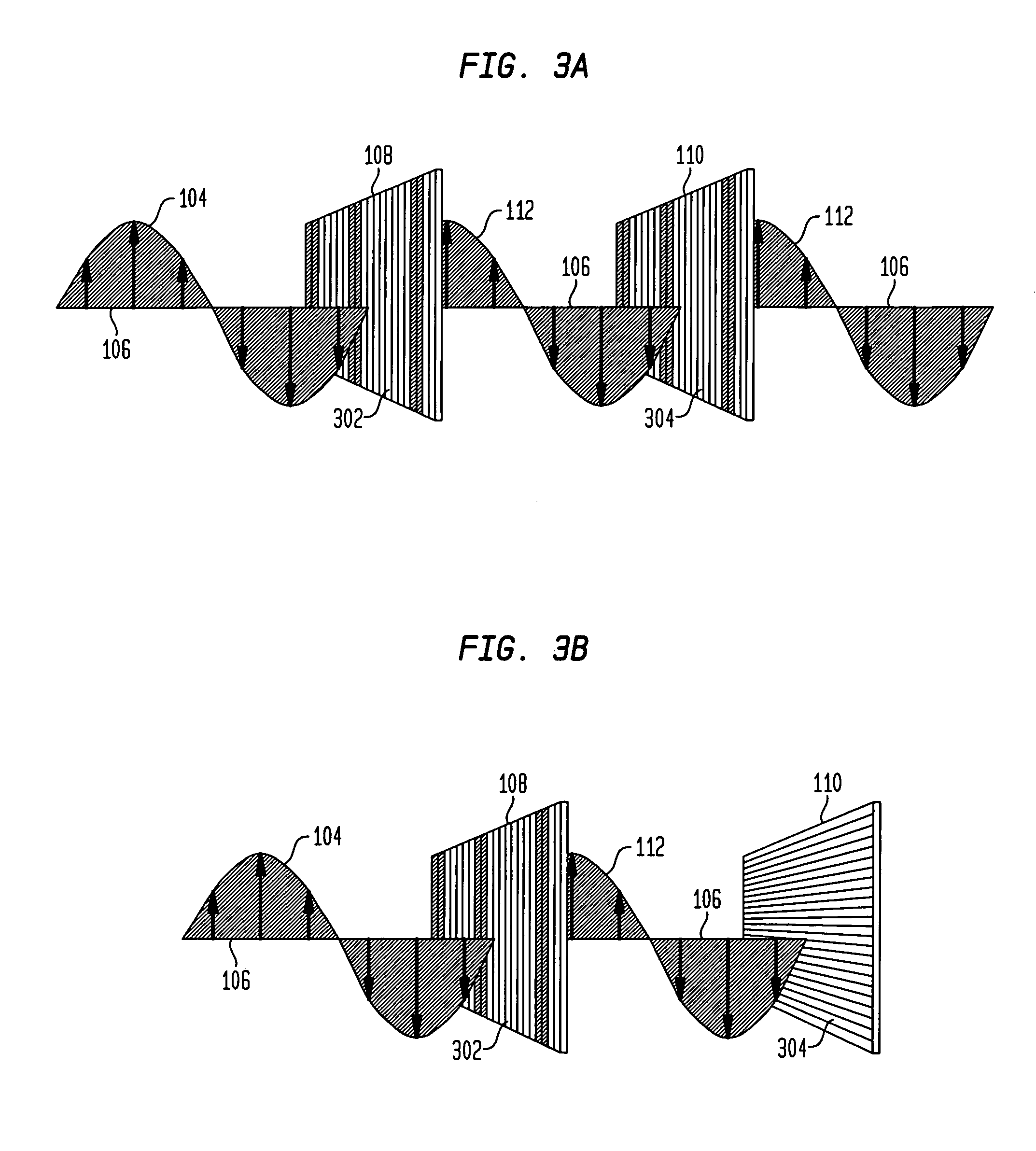Non-circular, mechanically variable optical attenuator
a mechanically variable, optical attenuator technology, applied in the direction of optical elements, optical radiation measurement, instruments, etc., can solve the problems of increasing optical attenuation, difficult to achieve circular mechanical motion required for crossing polarizers, and inability to rotate, etc., to achieve easy control
- Summary
- Abstract
- Description
- Claims
- Application Information
AI Technical Summary
Benefits of technology
Problems solved by technology
Method used
Image
Examples
Embodiment Construction
[0042]Preferred embodiments of the present invention are described below in detail with reference to the accompanying drawings. Referring more particularly to FIG. 1, white light 104, from a light source 102, is shown. It would be readily apparent to one skilled in the art that other forms of light, such as monochromatic light, single frequency light, as well as polychromatic light could be readily applied to the invention herein described and are alternative embodiments of the invention and that white light 104 is used for the purpose of convenience only. Additionally, it would be equally apparent to one skilled in the art that other forms of electromagnetic radiation including infrared radiation, ultra-violet radiation, and radio waves in addition to visible light are alternative embodiments of the present invention.
[0043]FIG. 1 illustrates white light 104 traveling through a first polarizing element 108 and a second polarizing element 110 along a propagation axis 106. Polarized l...
PUM
 Login to View More
Login to View More Abstract
Description
Claims
Application Information
 Login to View More
Login to View More - R&D
- Intellectual Property
- Life Sciences
- Materials
- Tech Scout
- Unparalleled Data Quality
- Higher Quality Content
- 60% Fewer Hallucinations
Browse by: Latest US Patents, China's latest patents, Technical Efficacy Thesaurus, Application Domain, Technology Topic, Popular Technical Reports.
© 2025 PatSnap. All rights reserved.Legal|Privacy policy|Modern Slavery Act Transparency Statement|Sitemap|About US| Contact US: help@patsnap.com



